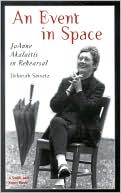Category Books
- Fiction Books & Literature
- Graphic Novels
- Horror
- Mystery & Crime
- Poetry
- Romance Books
- Science Fiction & Fantasy
- Thrillers
- Westerns
- Ages 0-2
- Ages 3-5
- Ages 6-8
- Ages 9-12
- Teens
- Children's Books
- African Americans
- Antiques & Collectibles
- Art, Architecture & Photography
- Bibles & Bible Studies
- Biography
- Business Books
- Christianity
- Computer Books & Technology Books
- Cookbooks, Food & Wine
- Crafts & Hobbies Books
- Education & Teaching
- Engineering
- Entertainment
- Foreign Languages
- Game Books
- Gay & Lesbian
- Health Books, Diet & Fitness Books
- History
- Home & Garden
- Humor Books
- Judaism & Judaica
- Law
- Medical Books
- New Age & Spirituality
- Nonfiction
- Parenting & Family
- Pets
- Philosophy
- Political Books & Current Events Books
- Psychology & Psychotherapy
- Reference
- Religion Books
- Science & Nature
- Self Improvement
- Sex & Relationships
- Social Sciences
- Sports & Adventure
- Study Guides & Test Prep
- Travel
- True Crime
- Weddings
- Women's Studies
An Event in Space: The Rehearsing and Directing Techniques of Joanne Akalaitis » (1ST)

Authors: Deborah Saivetz
ISBN-13: 9781575252391, ISBN-10: 1575252392
Format: Paperback
Publisher: Smith & Kraus, Inc.
Date Published: July 2000
Edition: 1ST
Author Biography: Deborah Saivetz
Book Synopsis
Other than a handful of essays in anthologies and an occasional mention in introductory college textbooks, little has been published on Akalaitis. She is one of America's foremost independent theatre directors, yet no book-length study exists on either the director herself or on Mabou Mines. Akalaitis's systematic approach to working with actors, however, has yet to be explored and elaborated upon in print. This book may provide a valuable introduction to the work of this important theater artist, locating it within the historical context of the American avant-garde theater movement of the past three decades. Moreover, by balancing step-by-step descriptions of Akalaitis's rehearsal exercises and directing techniques with critical analysis, the book speaks not only to theater practitioner but also the many theater scholars and audience members curious about a director whose work has often been misunderstood.
Library Journal
Akalaitis, an Obie winner and chair of the theater department at Bard College, is a controversial stage director who elicits strong positive and negative responses, probably a sign that she is doing something right. Saivetz, a director herself, examines Akalaitis's origins as cofounder of the experimental New York company Mabou Mines, arguing that Akalaitis was influenced, as an actor and director, by avant-gardists such as Jerzy Grotowski, Jean Genet, Samuel Beckett, and others. She then reviews Akalaitis's basic rehearsal exercises, which are used in collaboration with her actors to develop productions, and demonstrates Akalaitis's working methods by delving into two major productions, both of which Saivetz worked on. The last chapter is an unsatisfactory examination of why Akalaitis was fired from her position as artistic director of the New York Shakespeare Festival. Unfortunately, Saivetz does not fully examine the conflict between art and commerce that both drove the decision and explains Akalaitis's controversial career. The book ends with several interviews about Akalaitis and her work. Overall, this work is well documented but puzzlingly thin. For theater professionals only. Thomas E. Luddy, Salem State Coll., MA Copyright 2001 Cahners Business Information.
Table of Contents
Subjects
 Performing Arts
Performing Arts  Acting & Auditioning
Acting & AuditioningEntertainment
 Theater
Theater  Theater - Direction & Production
Theater - Direction & ProductionNonfiction
 Entertainment
Entertainment  Performing Arts
Performing ArtsNonfiction
 Entertainment
Entertainment  Theater
Theater
